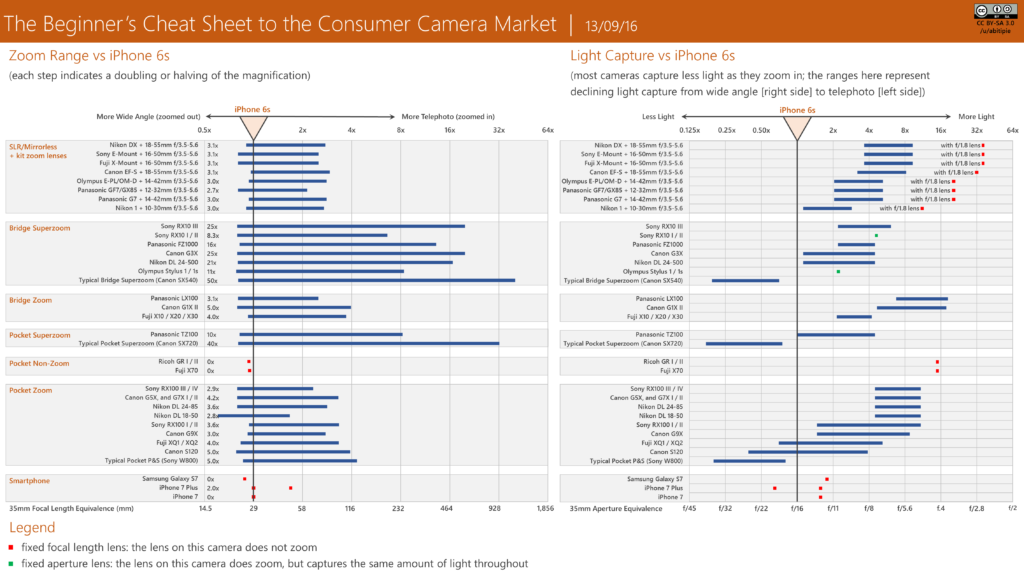The chart on the left compares zoom range to the perspective provided by the iPhone 6s. Anything to the left of the line indicates a wider-angle than the iPhone, and anything to the right indicates a more zoomed-in (telephoto) perspective. Each step along the X-axis is either a doubling or halving of the iPhone’s perspective. As you can see, smartphones provide a wide-angle perspective, but most zoom cameras will start a little wider, and zoom in significantly further.
The second chart compares light capture with the iPhone 6s. Light capture refers to the total light-gathering ability of the camera, and is a function of the size of the image sensor and the size of the lens aperture (opening for light). Each step on the X-axis indicates a doubling or halving of the total light captured by the camera (a stop, in photography jargon). Light capture indicates the image quality potential of a camera, especially in situations with poor lighting. Notice how smartphones and cheap compacts can take great daytime images, and yet in a dimly lit bar they give you a noisy, blurry mess? That’s a result of their poor light capture ability. A camera which captures double the light will allow you to shoot at twice the shutter speed with similar levels of image noise, or at the same shutter speed with approximately half as much image noise. As you can see, many dedicated cameras capture many times more light than smartphones.
As a lens zooms in it has an ever harder time capturing light. This is why the light capture chart shows ranges for most cameras. As the opposite of what you might expect, the right side of each range shows the light capture of the camera when zoomed all the way out, and the left side shows light capture when zoomed all the way in.
Finally, notice how the typical (read: cheap) pocket zoom and superzoom cameras actually capture LESS light than smartphones? This is the a result of having to cram a lot of zoom into a very small space. This is also why we don’t tend to recommend these cameras unless you need a zoom on the cheap and are willing to accept worse-than-smartphone image quality as a compromise.

